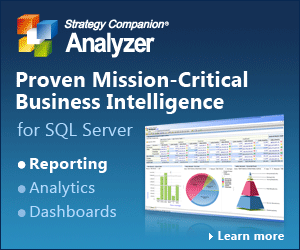Accounting For All The Variables
- Friday, April 10, 2009, 20:21
- Uncategorized
- Add a comment
 In response to the current financial crisis, financial institutions are trying to restore trust and confidence by focusing on their core business. S.R. Ramaswami, Executive Vice President of Polaris Software Lab, explains how its customers are leveraging HPC to satisfy customers and comply with regulations through improved operational efficiency, risk management and product pricing.
In response to the current financial crisis, financial institutions are trying to restore trust and confidence by focusing on their core business. S.R. Ramaswami, Executive Vice President of Polaris Software Lab, explains how its customers are leveraging HPC to satisfy customers and comply with regulations through improved operational efficiency, risk management and product pricing.
WFS: How have HPC systems been enhanced to make the proposition more compelling?
SRR: Financial institutions need to run models and scenarios over a period of time and update them. For many years they have had systems that could run what-if scenarios on segmented and aggregated data, but this was done in a batch-processing mode. The business users have had their customized Excel-based applications. In addition, firms have had data warehouses with drill down capabilities, but they possibly lacked real-time processing capabilities.
Systems were later enhanced to run high-resolution what-if scenarios through Microsoft Excel while all the transactions, consolidations and slicing and dicing were done in relational databases and in data warehouses. However, a gap still existed between the business user and data expert.
This gap now has been closed thanks to significant improvements in HPC technology. Microsoft’s HPC platform empowers the business user to use familiar Excel tools and infrastructure to run models in a couple of hours and assess more scenarios. To this end, insurers can meet their requirements for compliance, solvency, risk management, product pricing, fraud prevention and operational efficiency.

WFS: Can you give an example of how a financial institution is using the Polaris solution?
SRR: Polaris delivered an asset and liability management (ALM) solution to a large bank that operates in 90 countries. Leveraging Microsoft technology, our solution enables the bank to run what-if scenarios in just a few hours in order to forecast liquidity gaps in treasury trading. We’re now expanding the solution to enable the bank to manage other risks and comply with regulations in the insurance area.
WFS: Which key features is the bank taking advantage of?
SRR: Attribution analysis allows the bank to highlight the variance in risk numbers at the deal level. With on-demand reporting, it can handle more than 180,000 transactions per day and retain the last 90 days of transactions and cash flows in the warehouse. The componentized cash flow engine handles 12 accounting methods. Profile segmentation maps profit centers at the user level.
WFS: Any other projects you would like to highlight?
SRR: Polaris has provided a different customer with a solution for predictive modeling of Risk GARCH (Generalized Autoregressive Conditional Heteroskedasticity). We’re also now building a risk model for fraud prevention.
WFS: How are you working with Microsoft to provide effective HPC solutions to financial institutions?
SRR: As a Gold Certified Partner of Microsoft, we’ve established a Concept Lab to deploy an HPC solution for compliance, solvency, risk management, product pricing, fraud prevention and operational efficiency. This project is being done in collaboration with the University of Belfast HPC Lab, integrating the experience of GARCH ALM and Fraud Early Warning System (FEWS).
WFS: How would you summarize the benefits of HPC?
SRR: Financial institutions can leverage HPC to run complex models and scenarios that take into account many variables. Ultimately, that helps managers assess risk more accurately, make better decisions in a shorter timeframe and improve the solvency of the firm.
www.polaris.co.in
- Share
-
 Print This Post
Print This Post






